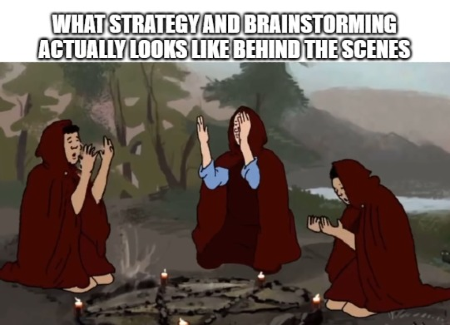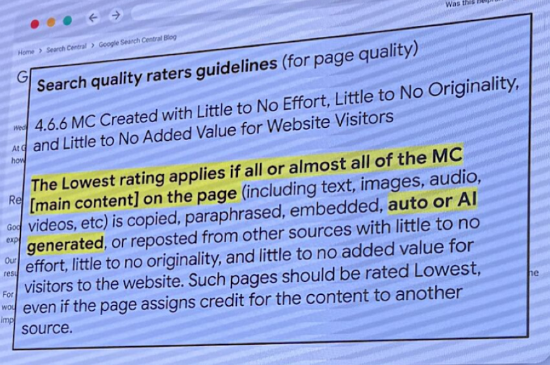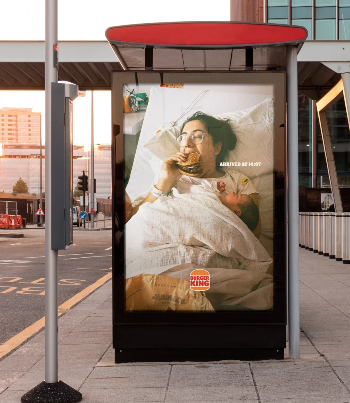Stop Blaming the Ad
🛑 You’re Probably Fixing the Wrong Problem, Google Flags AI Content, and more!


Howdy readers 🥰

In this newsletter, you’ll find:
🛑 Stop Blaming the Ad—You’re Probably Fixing the Wrong Problem
🚩 Google Flags AI Content as 'Lowest Quality' in New Rater Guidelines
🏆 Ad of the Day
If you’re new to ScaleUP, then a hearty welcome! You and 50k+ CEOs, CMOS, and marketers have reached the right place. Let’s get into it, shall we? Oh! Before you forget, if someone forwarded this newsletter to you, don't forget to subscribe to our newsletter so you never miss out!

Together with Neurons
Maximize Brand Impact with Every Campaign
What if you could predict how memorable your campaign is, before it even launches?
With Neurons AI, you can.
Make smarter brand decisions by knowing how your creatives will perform in terms of attention, engagement, and memorability, backed up by consumer neuroscience.
Instantly get AI-powered recommendations to refine your visuals and ensure your campaigns leave a lasting impression.
No more guesswork, just confident, data-backed creative decisions.
Top global brands like Google, Facebook, and Coca-Cola use Neurons to optimize for brand impact, driving results like a 73% lift in CTR and a 20% increase in brand awareness.
Improve Brand & Campaign Performance with Neurons today!

🛑 Stop Blaming the Ad—You’re Probably Fixing the Wrong Problem
So performance tanks. You stare at the ads. You blame the creative. Maybe fire off a new headline and call it optimization.
But here’s the brutal truth: the ad is almost never the real problem. That’s just the easiest thing to fiddle with when you don’t know where else to look.
Let’s flip the script—and talk about how real operators diagnose drops.
1. First Things First: Is Your Site Moving Like Molasses?
If your mobile site takes more than 2 seconds to load, you’ve already lost half the game. That click you paid for? They’re gone before your product image even shows up.
Don’t treat page speed as some dev team metric. It’s a conversion multiplier. Or a silent killer.
What to do: Run PageSpeed Insights. If your Largest Contentful Paint (LCP) is a mess, no ad—no matter how brilliant—is going to save your ROAS.
2. Look for the “Silent Killers” Between Click and Purchase
You’re probably measuring CTR and Purchase. But the real gold is in the gaps:
- Add to Cart falling off a cliff? Pricing confusion or bad product page UX.
- Initiate Checkout tanking? Shipping surprise, clunky forms, or trust issues.
- Purchase rate dying at the last step? Payment gateway anxiety.
What to do: Grab heatmaps, rage click data, and session replays. See how humans are actually navigating—not how your funnel “should” work.
3. Sometimes It’s Just… Tuesday
Not every dip is a Meta issue. Sometimes, the world’s just not buying that week. Smart marketers run a quick comparison: is CVR down across email, organic, or Google traffic too? If yes, it’s not your ad. It’s life.
What to do: Build a mini intent index across channels. If Meta’s down but others are steady, sure—optimize the ad. If everyone’s down, chill. You’re not broken.
P.S. To ensure you don’t make mistakes in judging your ad, Motion’s new AI agent is your perfect partner. Identify weak spots and improve performance without any bottleneck! You can get early access to Expert Agents here!
Here’s the Takeaway
Amateurs fix ads. Pros fix systems.
The ad is the last thing you touch—not the first. Start downstream. Zoom out. Stop playing whack-a-mole and start thinking like an architect. Because the biggest lever isn’t your creativity. It’s your clarity.

🛑 Google Flags AI Content as 'Lowest Quality' in New Rater Guidelines
Insights from SEL
Google has updated its Search Quality Rater Guidelines, signaling a tougher stance on low-effort AI-generated content. The January 2025 revision introduces stricter spam definitions, clearer rules on content originality, and an official warning: thin, unoriginal AI content could get your pages rated as "Lowest."

The Breakdown:
1. AI content = red flag if low-effort - Google explicitly defines "Generative AI" in its rater guidelines. Content that is entirely copied, paraphrased, embedded, or AI-generated with “little to no originality” now qualifies for a Lowest rating—even if credit is given. Sections 4.6.6 and 4.6.7 clarify how AI-written paraphrased material is identified.
2. New spam types, from filler to scaled AI abuse - Google reorganized its spam categories, targeting tactics like expired domain abuse, site reputation abuse, and scaled content creation. Even visual “filler” content that looks rich but adds no real value can lead to a Low rating.
3. Misleading claims and mild exaggerations penalized - Creators who exaggerate their credentials or claim expertise without proof will now trigger Low ratings. Raters are instructed to verify qualifications via outside sources—not just trust "I'm an expert" statements.
4. New clarity between Low and Lowest ratings - Google added more nuance between Low and Lowest classifications. Low ratings apply to reused content with minimal effort; Lowest applies when most of the main content is unoriginal and offers no added value. Social reposts, “best of” lists with recycled info, and cluttered recipe pages also face stricter review.
Google is sharpening its ability to detect thin AI content—and now raters are being trained to do the same. As generative tools flood the web with paraphrased and regurgitated material, Google is tightening the quality bar.

🎥 Ad of the Day

What Works:
“ARRIVED AT 14:07”
Just 4 words. No need to say “Whopper delivery” or “Satisfying moments.” It lets the image do the talking.
Candid Photography Style: Looks like a real iPhone snapshot — enhances authenticity. Hospital bed, natural light, slight mess — makes it feel lived-in. Single focal point (mom eating), no menu items, no price tags.
Human truth: Real hunger hits post-labor. Fast food at vulnerable, joyful moments. Burger King subtly positions itself as the first bite after a major life moment. That’s a category expansion play.
This is brand equity advertising disguised as a moment ad. BK isn't selling a burger here — they're placing themselves into one of the most real and vulnerable parts of human life.
Broader Insights:
This ad elevates Burger King from food to a comfort companion during life’s biggest moments. It’s a masterclass in emotional branding, done with restraint, wit, and perfect timing. More than an ad — it’s a memory trigger.

Advertise with Us
Wanna put out your message in front of over 50,000 best marketers and decision makers?

We are concerned about everything DTC and its winning strategies. If you liked what you read, why not join the 50k+ marketers from 13k+ DTC brands who have already subscribed? Just follow this.
At ScaleUP, we care about our readers and want to provide the best possible experience. That's why we always look for ways to improve our content and connect with our audience. If you'd like to stay in touch, be sure to follow us EVERYWHERE🥰
Thanks for your support :) We'll be back again with more such content 🥳

